 Most viewed - MIE 三重県 Most viewed - MIE 三重県 |

Tamaya inn Guest room22 views
|
|

Dining room on the 2nd floor of Tamaya inn.22 views
|
|

Guest room on the 2nd floor of Tamaya inn.22 views
|
|

Pillow22 views
|
|

Tamaya inn also has this storehouse for more exhibits centering on Hiroshige's woodblock prints of the Tokaido Road.22 views
|
|

Inside the kura storehouse, exhibits of woodblock prints of the Tokaido Road.22 views
|
|

Mie and Shiga sections of the Tokaido Road.22 views
|
|

22 views
|
|

Tamaya inn rear view.22 views
|
|

Seki-juku bulletin board (replica). 高札場22 views
|
|

22 views
|
|

Beauty salon in a traditional building in Seki-juku.22 views
|
|

Fukuzoji Temple has Koman's grave. 小万の墓 福蔵寺22 views
|
|

Fukuzoji Temple 福蔵寺22 views
|
|

Jizo-in Temple anchors one end of Seki-juku. It belongs to the Shingon Buddhist Sect, Omuro School. 地蔵院22 views
|
|

Jizo-in Temple, Main Hall is an Important Cultural Property. 地蔵院22 views
|
|

Jizo-in Temple's Jizo statue.22 views
|
|

22 views
|
|

22 views
|
|

22 views
|
|

On left, Kaiunro 開雲楼, former geisha house in Seki-juku. On the right is another former geisha house, Shokakuro 松鶴楼. 22 views
|
|

22 views
|
|

Ninja at JR Tsuge Station.22 views
|
|

Roof of Kameyama Castle's Tamon-yagura turret.22 views
|
|

22 views
|
|

Kameyama Shrine in Mie. 亀山神社 22 views
|
|

22 views
|
|

22 views
|
|

22 views
|
|

22 views
|
|
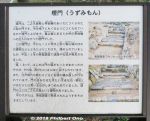
22 views
|
|

Partial stone wall remaining.22 views
|
|

Partial stone wall remaining.22 views
|
|
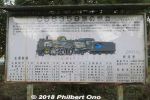
22 views
|
|

Saiku History Museum (officially and incorrectly named "Saiku Historical Museum") is a 15-min. walk through the park from Saiku Station on the Kintetsu Yamada Line.21 views
|
|

Saio princess procession.21 views
|
|
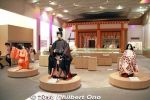
Aristocratic boy wearing a Heian-Period suikan costume. 童男人形「水干」, Government official wearing a sokutai costume. 武官人形「束帯」, and aristocratic girl wearing akome costume. 童女人形「衵」21 views
|
|

The first palanquin carries the Nyo-betto (女別当), the supervisor of the court ladies.21 views
|
|

Girls called Warawame (童女) wearing chihaya costume 千早. Part of the festival route was the actual route where the Saio princess traveled to Ise Grand Shrines.21 views
|
|
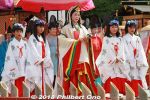
Saio posing with Warawame (童女) dressed in chihaya costume. 千早21 views
|
|

The train line cuts right across the Saiku site.21 views
|
|

Seki Machinami Shiryokan (Seki Townscape Museum) is a local history/culture museum. 関まちなみ資料館21 views
|
|
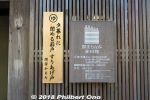
Adult admission ¥300, open 9 am to 4:30 pm.21 views
|
|

Corridor21 views
|
|

Grandfather's clock.21 views
|
|

Kura storehouse21 views
|
|

Kitchen stove.21 views
|
|

Road marker21 views
|
|

Ito Honjin lodge. Now an electronics shop. 伊藤本陣跡21 views
|
|

Kitchen roof was high to dilute the smoke.21 views
|
|

21 views
|
|

Dining room on the 2nd floor of Tamaya inn.21 views
|
|

Top floor of the kura storehouse.21 views
|
|

Old shop sign adds to the townscape's charm.21 views
|
|

Gochisoba plaza used for greeting VIPs arriving Seki-juku. 御馳走場21 views
|
|
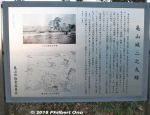
About the Ninomaru.21 views
|
|
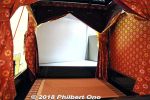
Saio princess palanquin called "Sokaren." 斎王の神輿「葱華輦」20 views
|
|
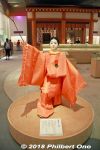
Aristocratic boy wearing a Heian-Period suikan costume. 童男人形「水干」20 views
|
|
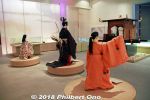
20 views
|
|
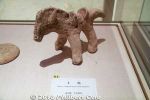
Doba (clay horse figurine)20 views
|
|

In front of the Saio princess palanquin are girls are called Warawame (童女). They are daughters of the Imperial family or nobility and are learning the customs of the Saiku while living in the Saiku Palace. 20 views
|
|

You see a lot of wooden lattice on the exterior. Supposed to ward off wind and rain.20 views
|
|

Guest room on the 2nd floor of Tamaya, a high-class inn.20 views
|
|

20 views
|
|

About the Saio princess' Sokaren palanquin. The roof has a decoration that looks like an onion flower. 19 views
|
|
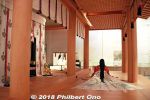
19 views
|
|

19 views
|
|
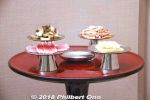
Saio’s meals19 views
|
|

The Saio princess officiated important ceremonies at Ise Grand Shrines only three times a year.19 views
|
|

Route of the Saio Gunko procession.19 views
|
|
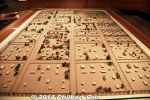
Scale model of of the Saikuryo Government area where the Saio resided in Saiku. A large spread of administrative buildings, storehouses, and shrines. 斎宮寮 復元模型 1/400 19 viewsToday, archaeological digs continue at this site. An area 2 km by 700 meters has been designated as a National Historic Site.
|
|
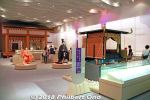
Exhibition Room 1 shows Saiku Palace- and Saio princess-related artifacts. Costumes, reconstructed Saio living quarters, and a few mannequins. 常設展示室I18 views
|
|

About the aristocratic boy's Heian-Period suikan costume. 童男人形「水干」18 views
|
|
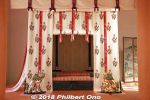
Sleeping quarters for Saio princess.18 views
|
|
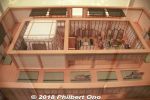
Top view of living quarters of the Saio princess. 斎王御殿 復元模型 1/15 18 views
|
|

18 views
|
|

History of the Saio.18 views
|
|
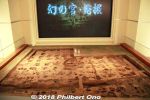
Scale model of a Saiku archaeological excavation. 発掘調査区模型(20分の1)18 views
|
|

The fall and abolishment of the Saiku.18 views
|
|
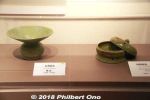
Green-glazed pottery used in Saiku. 18 views
|
|
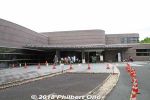
Opened in Oct. 1989, the Saiku History Museum (officially and incorrectly named "Saiku Historical Museum") is located on the former site of the Saiku Palace. 17 viewsOpen 9:30 am to 5 pm. Closed Mon. and Dec. 29–Jan. 3.
Admission ¥340 (Free for kids)
|
|

Museum entrance hall.17 views
|
|

Museum floor plan. There are two Exhibition Rooms, lecture hall, theater, library, and coffee shop.17 views
|
|
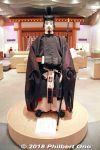
Government official wearing a Heian-Period sokutai costume. 武官人形「束帯」17 views
|
|
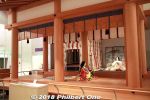
Living quarters of the Saio princess in the 11th century. 斎王居室復元模型17 views
|
|
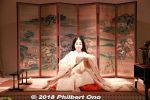
Saio princess in her living quarters (dining room). She wears a white juni-hitoe kimono, formal clothing used in ceremonies. 斎王の居室17 views
|
|
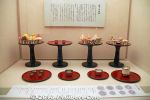
Saio’s meals.17 views
|
|
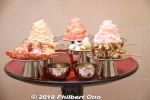
Saio’s meals17 views
|
|

Selection and isolation of the Saio princess.17 views
|
|

Faith and purity in Saiku. The Saio princess was not allowed to fall in love. How cruel...17 views
|
|
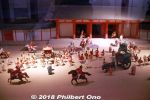
Model of Saio Gunko procession. In its heyday, there were as many as 500 people in her procession.17 views
|
|
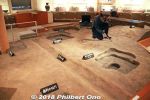
In 1970 when they surveyed the land for a housing project in Meiwa, they finally discovered the remains of the Saiku Palace. In 1979, the site was designated as a National Historic Site. Reconstruction of a Saiku archaeological excavation.17 views
|
|

Saiku buildings.17 views
|
|
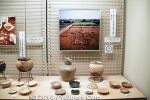
Pottery found at the Saiku site.17 views
|
|
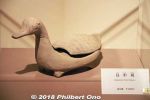
17 views
|
|

My video of the Ageuma Festival at Inabe Shrine in April (猪名部神社). Watch the horse successfully jump over the barrier atop the slope. Not to be confused with the larger Tado Ageuma Festival.17 views
|
|
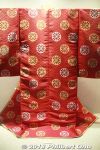
Saio princess kimono.16 views
|
|
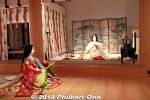
Living quarters of the Saio princess. Woman in front is the Myobu, the Saio’s first lady-in-waiting. 斎王の居室16 views
|
|
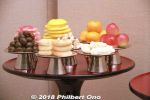
Saio’s meals16 views
|
|

About the Saio procession.16 views
|
|
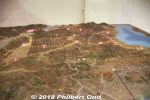
The Saio princess and her entourage of several hundred traveled from Kyoto (left in photo) to Ise in five nights and six days, about 130 km. 16 viewsAlong the way, they lodged at Seta (Otsu), Koka, Tarumi (Tsuchiyama), Suzuka, and Ichishi before arriving in Saiku.
|
|
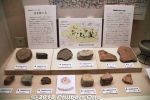
Saiku roof tile fragments.16 views
|
|
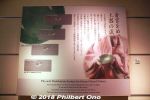
Green-glazed pottery16 views
|
|
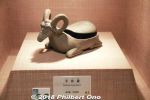
16 views
|
|

Saiku is also known for ancient burial mounds (kofun) or tsukayama. This one is near the history museum. 塚山2号墳16 views
|
|
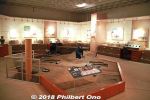
Exhibition Room 2 centers on Saiku archaeological excavations and artifacts. Here's a reconstruction of a Saiku dig. 常設展示室II15 views
|
|
|
|
| 1114 files on 5 page(s) |
 |
 |
5 |
|